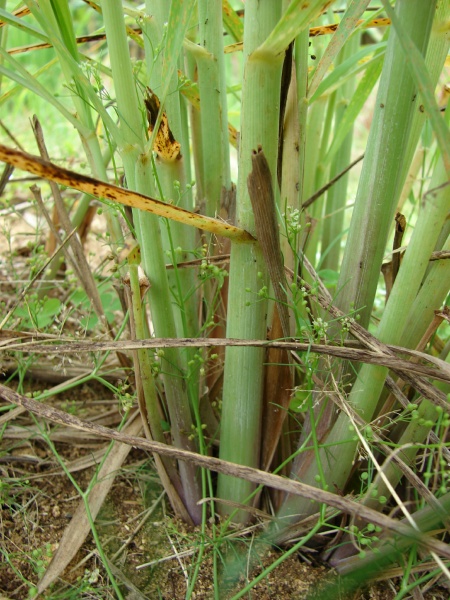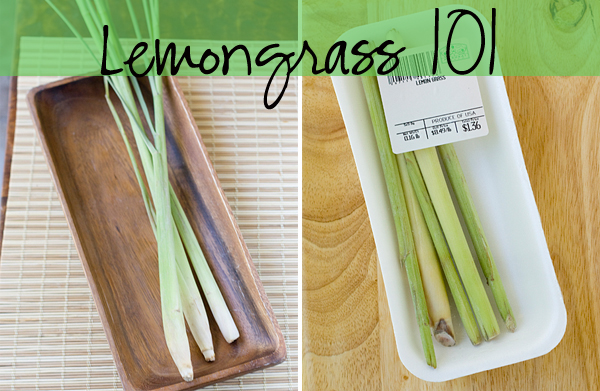
Nutrition
Lemongrass is an autotrophic, primary producer. From this, you can infer that to obtain nutrition Cymbopogon citratus does indeed photosynthesize, meaning it converts energy recieved from the light into chemical energy that then gets stored as sugars or other organic molecules. Being a vascular plant, lemongrass transports nutrients through vascular tissue with paralleled venation.
 Plants transport nutrients and photosynthetic products
through Xylem and Phloem; xylem transporting water and nutrients
picked up by the roots, and phloem transporting products of
photosynthesis to areas of growth that need it. The plant stores
its "food" as sugars in the roots, which serve as
storage sites and in nutrient absorption.
Plants transport nutrients and photosynthetic products
through Xylem and Phloem; xylem transporting water and nutrients
picked up by the roots, and phloem transporting products of
photosynthesis to areas of growth that need it. The plant stores
its "food" as sugars in the roots, which serve as
storage sites and in nutrient absorption.
Water transport is accomplished in the the xylem. Water evaporation from the cell wall creates a lower water potential in the cell walls and protoplasts. Water located in the xylem is pulled up because of the cohesion of the water molecules. The lowered potential is transferred to the root cells which then increase absorption of water in the soil through the root hairs.
Transport in the phloem allows the dispersion of dissolved solutes, hormones, and amino acids. The best theory to explain this process is know as the pressure-flow (or bulk flow) model. In this model, the source of the sucrose actively transports the sucrose into the cells that make up the phloem, the sieve tubes, and then the water flows through osmosis. The positive pressure then triggers the "sap" to flow through the sieve tubes that are stacked and separated by sieve plates, which allow molecules to flow through. The molecules flow to the areas that need it, such as the roots or budding or growing areas, where it is actively transported out of the sieve tubes and the water follows suit by osmosis.
To aid in nutrient uptake the plant may form mutualistic, endomycorrhizae bonds with fungal members of the glomeromycota.
An old yet interesting study was conducted on the photosynthetic rates of Citronella (Cymbopogon nardus) and lemongrass (our very own Cymbopogon citratus!). Three populations of the lemongrass were grown at 8 hour and 15 hour intervals, or "photoperiods," and the photosynthetic rates were recorded for the mature leaves. The controlled environment was kept at 25 degrees Celsius, and 260 microeinsteins per meter squared per second. they concluded that as the plants aged, that rates began to decline with the lemongrass growing at the 8 hour interval having a higher photosynthetic rate compared to the 15 hour interval. They also found that for four tested groups, the highest rates of net photosynthesis was grown at 27/21 degrees Celsius and for two other tested sections, the highest NPR was grown at 32/27 degrees Celsius.
Interestingly enough, from the original statement you can also infer that you yourself can consume and receive nutrition from the plant. Consuming lemongrass can provide you with numerous health benefits as it is packed with minerals, essential oils, and vitamins (see Nutrition for nutritional fact.) These combinations are also known, and tested to haves anti-oxidant, anti-bacterial, disease preventing, and even anti-fungal properties.(see interactions page for details on these properties. The low-cal snack contains only 90 calories per 100 g you consume, and absolutely ZERO cholesterol. The herbs are filled with vitamins your body if unable to produce but still requires including: vitamin B5 (pantothenic acid), vitamin B-6 (pyridoxine), and vitamin B-1 (thiamin). It also contains the anti-oxidant vitamins C and V. Lemongrass is also a hotbed for minerals including potassium, iron, calcium, zinc, magnesium, copper, and manganese. Finally Cymbopogon citratus contains folic acid in the stems and leaves, which is great for out mommies-to-be! For more information on the leaves see adaptation.
